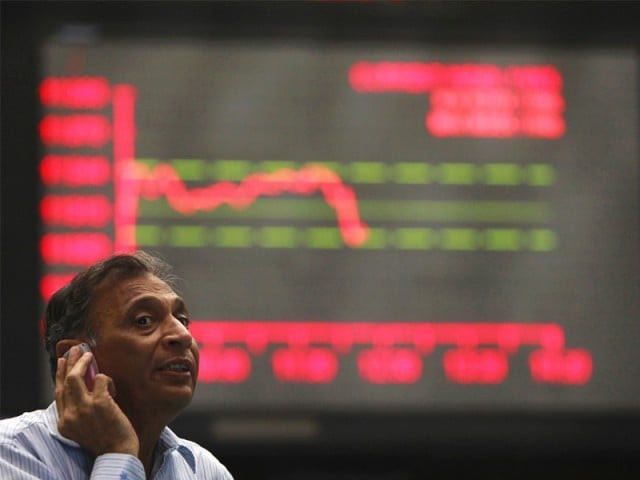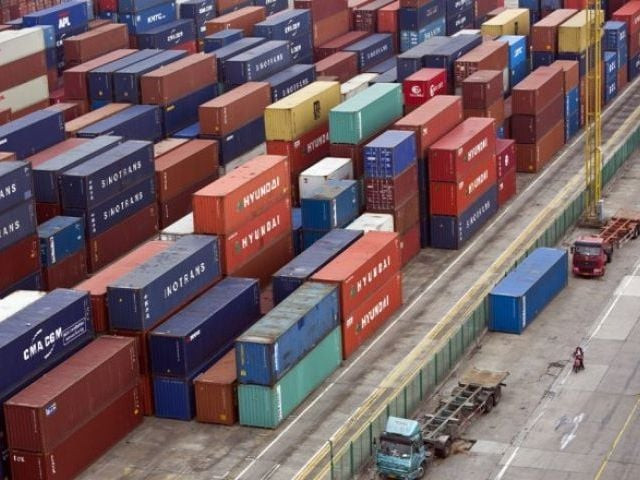Business
Textile innovators forge new pathways | The Express Tribune

SHANGHAI:
Five of Pakistan’s leading textile and apparel manufacturers are capturing international attention at the ongoing Intertextile Shanghai Apparel Fabrics— Autumn Edition 2025, a global trade event taking place from September 2 to 4.
Their presence underlines the vibrant revival of Pakistan’s textile sector, which is riding a wave of impressive export growth.
The industry kicked off the current fiscal year with extraordinary vigour, registering a 32% surge in exports in July. The sector has shown a positive growth trend in recent months, with June recording a year-on-year increase of 7.59%.
For the entire fiscal year 2024-25, the sector’s exports climbed 7.39% to $17.887 billion, up from $16.655 billion in the previous year, signaling a robust and sustained recovery.
Participating Pakistani companies are leveraging the expo to foster crucial partnerships. Pakistan Consul General in Shanghai Shehzad Ahmad Khan emphasised the strategic importance of the platform.
“Pakistani companies have a long tradition of participating in Intertextile, which offers two vital segments: one for fabrics and another for apparel,” he said. “This provides an excellent opportunity for collaboration with Chinese companies, particularly in acquiring cutting-edge technology for man-made fabrics and exploring joint ventures in high-value apparel using wool, cotton and specialty materials.”
The diplomat also highlighted the potential of Sino-Pakistan partnership to target international markets collectively. “This type of exhibition enables Pakistani companies to not only upgrade their technological capabilities but also form strategic alliances for entering third-party markets.”
Among the Pakistani exhibitors is Azgard Nine, a producer of environmentally sustainable denim fabrics and garments for global markets. Deputy General Manager Sana Arshad expressed strong optimism based on past successes.
“Our participation in the spring edition yielded positive results and we are highly confident that this edition will open even more doors for innovation and partnership,” she remarked.
Business
Setback for expatriates? Delhi HC upholds mandatory EPFO membership; what this means for foreign staff – The Times of India

The Delhi High Court on Tuesday ruled that expatriates working in Indian companies must become members of the Employees’ Provident Fund Organisation (EPFO) and contribute to the fund regardless of their income levels.The court upheld amendments to the Employees’ Provident Funds and Miscellaneous Provisions Act, 1952, as well as the Centre’s 2008 and 2010 notifications that mandate international workers to contribute to the Employees’ Provident Fund (EPF).Under the ruling, international workers will be allowed to withdraw their full EPF balance only after retiring at or after the age of 58, or in cases of permanent and total incapacity. This is seen as a setback for expatriates who generally work in India for shorter periods of two to five years, reported ET. Indian workers, by comparison, are required to contribute if they earn below Rs 15,000 per month. Legal experts noted that many foreign employees have already left India, meaning employers will now have to bear their share of contributions.A division bench of Chief Justice Devendra Kumar Upadhyaya and Justice Tushar Rao Gedela held that the distinction between foreign and Indian employees was justified. The court accepted the government’s position that international workers form a separate group because they contribute only during their limited time in India, unlike domestic employees who contribute throughout their service.“The classification made was reasonable and it also has an object sought to be achieved that the purpose of mandating an employee to be a member of 1952 scheme was to provide social security,” the court said, as quoted by ET.The court also upheld EPFO communications directing SpiceJet and LG Electronics India to deposit provident fund and related dues for their international staff. It dismissed SpiceJet’s challenge to summons issued in 2012 requiring it to produce records for determining liabilities, and similarly rejected objections raised by LG Electronics.The Delhi High Court’s ruling aligns with a previous judgment of the Bombay High Court, while the Karnataka High Court has ruled to the contrary. Due to the conflicting views, the matter is expected to reach the Supreme Court for final interpretation. Both companies are assessing the implications and are likely to move to the Supreme Court, according to legal sources.Atul Sharma, counsel for SpiceJet, said, “The entire basis of amendment to the scheme is implementation to certain treaties with countries who have similar provision for social security. And under the Constitution of India, this amendment could not be implemented as treaties have not been ratified by Parliament.” He said the issue requires further consideration.The companies had argued that the classification between foreign and Indian employees was discriminatory.
Business
GST rationalisation impact: Higher RBI dividend expected to offset revenue shortfall; CareEdge flags tax pressure – The Times of India

The recent rationalisation of Goods and Services Tax (GST) rates is likely to create a net revenue loss of around 0.1 per cent of GDP in the current financial year. However, this shortfall may be compensated by the higher dividend payout from the Reserve Bank of India (RBI), according to a report by CareEdge Ratings.The report, cited by ANI, highlighted that tax revenue growth has already slowed this year. With nominal GDP growth projected to be lower in FY26, achieving the full-year tax collection targets could become more difficult. The effect of the income tax relief announced in the last Budget, along with the revised GST structure, will need to be closely watched in the coming months.
CareEdge noted, “The net revenue shortfall from GST rationalisation is expected to be offset by the higher dividend transfer received from the RBI.”Despite the support from non-tax revenue, the report cautioned that weaker tax inflows could limit the government’s spending capacity in the latter half of the fiscal year. This could become more pronounced if the Centre continues to focus on its fiscal consolidation goal, which involves gradually lowering the fiscal deficit over time.When the GST rationalisation decision was announced, the GST Council had estimated the fiscal implication at about Rs 48,000 crore, or around 0.15 per cent of GDP based on FY24 consumption levels. The Council had also expected that stronger consumption could help recover part of this impact through improved GST receipts.A separate analysis by the State Bank of India (SBI), reported by ANI, projected that the central government’s revenue loss due to the GST rate cuts will be about Rs 3,700 crore in FY26. SBI noted that robust growth and increased consumer demand have helped soften the overall impact.SBI pointed out that while the initial estimated loss from GST rate changes was Rs 93,000 crore, additional GST collections led to the net loss narrowing to Rs 48,000 crore.During the first half of the current fiscal year, a slowdown in tax receipts was partly cushioned by strong non-tax revenue, particularly the higher dividend from the RBI. Meanwhile, the reduction in personal income tax rates announced in the Budget has contributed to slower income tax collections this year.While the complete fiscal impact of the GST rationalisation will become clearer over time, analysts suggest that the government may still be able to maintain fiscal balance. The combination of higher non-tax revenue and potential gains from stronger consumption-led GST inflows could help offset the pressure from moderating tax collections.
Business
Novo Nordisk cuts sales and profits guidance amid obesity drug competition

The drugmaker behind Ozempic and Wegovy has cut its sales and profit targets in the face of intense competition from other weight-loss and diabetes treatments.
Novo Nordisk warned over weaker-than-expected profits amid the recent growth of US rival Eli Lilly’s Mounjaro and Zepbound injection treatments.
The boss of the Danish pharmaceutical firm linked its reduced guidance to the market for weight-loss treatments being “more competitive than ever”.
Mike Doustdar, chief executive of Novo Nordisk, said: “While we delivered robust sales growth in the first nine months of 2025, the lower growth expectations for our GLP-1 treatments, for diabetes and obesity, have led to a narrowing of our guidance.”
The firm said sales are set to rise by up to 11% this year. It had previously guided towards growth of up to 14%.
It also reported that operating profits will rise by up to 7% this year, pulling down its previous guidance of up to 10%.
It came as the business reported that sales in its diabetes and obesity care division grew by 12% in Danish kroner, or 15% at constant currency rates, over the first nine months of 2025.
This included a stronger performance across obesity, with 7% growth in the diabetes-focused part of the division, which includes Ozempic.
Meanwhile, operating profits grew by 5%, or 10% at constant currency rates, for the year so far.
It said this included a nine billion kroner (£6.7 billion) impact from one of restructuring costs.
This came after the company launched a major overhaul in September, which included plans to cut around 9,000 jobs globally.
Mr Doustdar added: “Our company-wide transformation has already driven operational efficiencies, and we have a renewed focus that can deliver a range of potential treatment options that will serve millions more patients, mainly in obesity.
“We aim to accelerate on all fronts to be able to compete better in dynamic and increasingly competitive markets.”
-

 Tech1 week ago
Tech1 week agoOpenAI says a million ChatGPT users talk about suicide
-

 Tech1 week ago
Tech1 week agoUS Ralph Lauren partners with Microsoft for AI shopping experience
-

 Tech1 week ago
Tech1 week agoHow digital technologies can support a circular economy
-

 Sports1 week ago
Sports1 week agoBilly Bob Thornton dishes on Cowboys owner Jerry Jones’ acting prowess after ‘Landman’ cameo
-

 Tech1 week ago
Tech1 week agoAI chatbots are becoming everyday tools for mundane tasks, use data shows
-

 Fashion1 week ago
Fashion1 week agoITMF elects new board at 2025 Yogyakarta conference
-

 Fashion1 week ago
Fashion1 week agoCalvin Klein launches Re-Calvin take-back programme across the US
-

 Business1 week ago
Business1 week agoTransfer test: Children from Belfast low income families to be given free tuition












